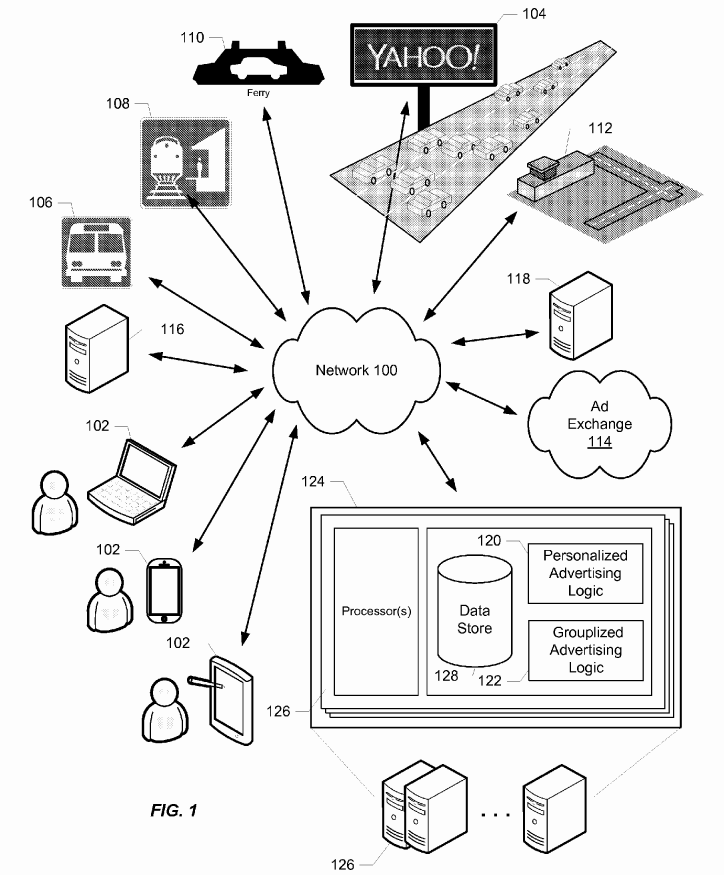George Orwell never dreamed of advertising as invasive as Yahoo’s proposal

Tags: 1984
George Orwell never dreamed of advertising as invasive as Yahoo’s proposal published by nherting
Writer Rating: 5.0000
Posted on 2016-10-22
Writer Description: current events
This writer has written 195 articles.
Yahoo wants to take advertising to the next level—that is, the Orwellian level—bombarding people in public places with targeted advertising served up by the surveillance society. That's according to a Yahoo patent application recently published by the US Patent and Trademark Office. According to Yahoo, the time has come to move outdoor and public-facing advertising into the digital age—and get there by deploying more intrusive techniques than how it's now done online.
Introducing "Smart Billboards," as Yahoo calls them. These digital billboards—which Yahoo envisions being placed along freeways and in bars, airports, planes, ferries, buses, trains, and other public spaces—might rely on video cameras, satellites, drones, microphones, motion detectors, and "biometric sensors" such as fingerprint, retinal, and facial recognition devices. Combined, these "sensor systems," as Yahoo calls them, analyze their surroundings to determine a common theme to serve up ads, in what Yahoo describes as "grouplization."
Yahoo's patent proposal notes that "the sources of data and information that may be used to enable the techniques described herein are virtually limitless."
Taken together, this real-time collected information generates an "aggregate audience profile," and ads are promptly served, Yahoo says:
In the past few years, online advertising has quickly become the primary channel by which advertisers reach out to consumers. The ubiquity of mobile devices and the ability to craft individualized marketing strategies to meet the needs and interests of specific consumers have made a compelling case for such techniques as the most efficient use of marketing budgets. Nevertheless a significant portion of such budgets is still devoted to more traditional channels.
For example, advertising in public spaces (e.g., roadside billboards, public transit, etc.) continues to be an important channel for advertisers even though it does not offer the kind of individual targeting by which online techniques are characterized. However, most public space advertising adheres to business models that are decades old. For example, many roadside billboards are still static printed images that must be manually installed and remain in place for long periods of time relative to the lifespan of an online ad. More recently, some billboards have been implemented as large screens that display a fixed rotation of images. But while these billboards represent a step in the direction of the digital age, they lag far behind their online counterparts in a number of respects.
Here's two examples of how a freeway billboard might dish up ads, according to the recent patent application:
According to one example, a digital billboard adjacent a busy freeway might be instrumented with or located near traffic sensors that detect information about the context of the vehicles approaching the billboard, e.g., the number and average speed of the vehicles. Such information might be used in conjunction with information about the time of day and/or the day of the week (e.g., Monday morning rush hour) to select advertisements for display that would appeal to an expected demographic and to display the advertisements for durations that are commensurate with the level of traffic congestion. In another example, such a billboard could be instrumented with one or more digital cameras that capture images or video of the vehicles on the freeway that are approaching the billboard. Using image recognition techniques, information about the makes and models of the vehicles could be used to further inform the selection of advertisements by including real-time information that correlates with demographic characteristics of at least some of the target audience.
Let's not forget about tapping into mobile phones, cell-site towers, and vehicle GPS mapping devices:
In another example, image recognition techniques can be used to identify the makes, models, and years of vehicles on a highway, from which demographic information relating to the socioeconomic status of the corresponding drivers can be made using, for example, previously stored marketing information. Such information can then be aggregated to represent all or at least a portion of the target audience. In yet another example, cell tower data, mobile app location data, or image data can be used to identify specific individuals in the target audience, the demographic data (e.g., as obtained from a marketing user database) for which it can then be aggregated to represent all or a portion of the target audience. In still another example, vehicle navigation/tracking data from vehicles equipped with such systems could be used to identify specific vehicles and/or vehicle owners.
The patent goes on to describe advertising measurement and that advertisers would compete and bid for ad space.
Sources: No sources found for this article.
You have the right to stay anonymous in your comments, share at your own discretion.


